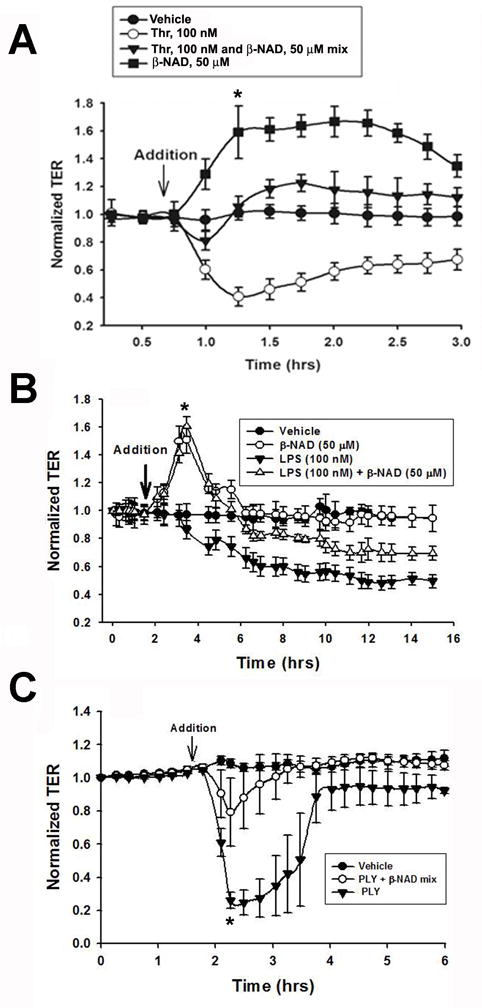Figure 4.

Extracellular β-NAD protects HPAEC monolayers from barrier-disruptive effects of thrombin and Gram-negative and Gram-positive bacterial toxins, lipopolysaccharide (LPS) and pneumolysin (PLY). HPAEC plated in ECIS arrays were challenged with either 100 nM thrombin (A) or 100 nM LPS (B) or 31.2 ng/ml PLY (C). The challengers were added either alone or in mixture with 50 μM β-NAD. β-NAD consistently prevented HPAEC barrier dysfunction in the cells treated with thrombin or PLY and significantly protected barrier integrity in the cells treated with LPS. Data are representative of several independent experiments (minimum of three) (*p < 0.05 compared with control).
